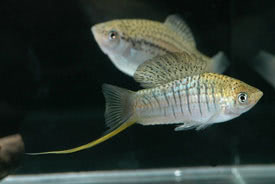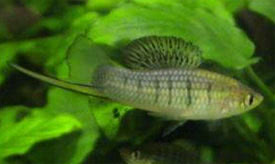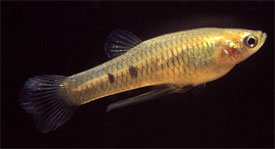
 Magyarul / Hungarian
Magyarul / Hungarian


- Scientific name: Xiphophorus nezahualcoyotl
- Common name: Mountain swordtail
- Group: Livebearers
- Habitat: Central America; Mexico
- Size: Males:6-10 cm (without the "sword"l), females:12 cm
- Biotope: Rivers with thick vegetation.
- Social behavior: Peaceful
- Diet: Omnivorous
- Breeding: Quite easy
- Tank: Minimum 200 litres
- Population: 6-8 fishes for 200 litres
- Decoration: Thick vegetation
- Temperature: 20-23 °C
- pH: 7-8
- Hardness: 10-20 NK°
- Lifespan: 4-5 years
Description: The fish is named after a famous philosopher king of the Texcocan people in Mexico, Nezahualcoyotl, (1403-1473), whose name means "hungry fox". After the death of his father, the king, in a war, he was forced to flee his country. But some years later, after many adventures, he returned to overthrow the conqueror and reclaim the throne. His reign was apparently one that encouraged the arts and he died believing he had founded a dynasty. He was unaware that 47 years after his death, the Spaniards under Cortez would destroy his civilization. It seems fitting that a Mexican swordtail should be named after such a man.
Xiphophorus nezahualcoyotl (Northern Mountain Swordtail) should be kept in aquariums that are heavily planted along the sides and in the back while leaving the middle open so that the fishes get an open area to swim on. Decorate the bottom of the aquarium in accordance with the needs of eventual other species kept in the aquarium. Always keep more females than males.
Xiphophorus nezahualcoyotl (Northern Mountain Swordtail) are livebearers. The females give birth to their young in a calm protected spot among plants. The fry immediately hides among the plants. The pregnant females can be isolated before they give birth for better breeding results.






